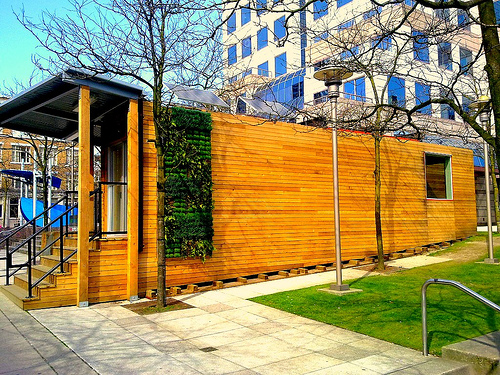Conceptions and aspirations of the eco home are no longer confined to the domain of the ‘eco warrior’ in a grass-roofed hut. The modern ecological home can look like any other, hiding its clever environmentally friendly or economical features in inconspicuous ways. We all have a chance to look after our planet, starting with the environment we choose to live in. However the ultimate eco friendly home cannot be achieved in one easy step, it requires several significant changes from the way an ordinary house is built and managed. If you’re building a house here are some tips for building in an eco friendly way and creating an eco friendly living facility;
Design an eco friendly home
This may sound obvious but starting in the design process, making choices with an eco home in mind is preferable to ‘retrofitting’ to achieve an eco friendly build. An airtight or ‘passive’ home is exceptionally eco friendly and energy efficient (which is an aspect of being eco friendly). Passive homes don’t leak air like most buildings do. Ordinary buildings lose heat quickly through small gaps or poor insulation and so you must constantly keep providing more heat, an obvious waste whereas passive homes are a self contained climates, regulated with by purposeful vents and fans rather than airflow that has not been designed and implemented but is actually accidental. Passive homes do cost 3 and 8% more than a regular build but in the long run it will reduce the amount of wasted heat from your home, lowering your bills and your contribution to carbon dioxide emissions.
Use alternative building materials
Wood is a fantastic, eco friendly building material because despite worries about deforestation if you source your wood properly there should be no environmental or ethical issues. Furthermore wood retains 40% more heat than brick or building blocks so is an ideal material to use in the quest for an energy efficient home. To top off the list of advantages wooden prefabricated buildings like the increasingly popular modular buildings in South Africa can be erected and ready to move into in just a matter of weeks.
Continuing the theme of insulating your home you can use recycled or natural materials to do this, further committing to the goal of an eco friendly home. Old newspapers, recycled denim, straw and wool are all fantastic insulators. You’ll need to have your home tested for air tightness once you’ve finished putting the insulation in. This will help you find and close up any leaking areas.
Reduce your water usage
There are many ways you can reduce the amount of water you use and one clever way of making use of the natural water around you rather than relying on the utilities companies. Building a rain water harvester will capture the rain that falls on your house and usually goes down your gutters and straight into the drains. This can be used in your home and on your garden.
Also See: Eco Friendly Homes Benefits
Reduce your water usage by building a composting toilet. Although raw human waste (sometimes called ‘night soil’) cannot be used directly on your garden, particularly on plants that are to be consumed, properly composted human waste is perfectly safe and full of minerals and nutrients. You can build a compost toilet yourself or buy an ultramodern manufactured composting toilet that you can install inside your house. Whether you make it yourself or buy it the idea is to eliminate the massive amount of water usage associated with toilet flushes by using no water at all. Urine and excrement are separated and sorted. Urine can be used to fertilise certain plants straight away but excrement must go through a series of treatments before it can be safely used on your veg patch.
If you have no use for compost or feel that a composting toilet is too much responsibility then there are other eco friendly toilets that still help to reduce water wastage, albeit to a lesser extent. For example a toilet that reuses the water you use to wash your hands in order to fill the cistern. As always showers are more efficient than baths and are a very common method of reducing water consumption.
Generate your own energy with renewable energy sources
Anyone who reads the news knows that energy prices are rising and that the world’s supply of fossil fuels is finite. It is becoming more and more appealing to try to become self sufficient not just from an environmental perspective but an economic one too. There are various types of solar panels, some of which produce energy that you can use to power the lights and appliances in your home while other types of solar panel store heat and provide your home with heat and hot water. Depending on the climate you live in you may be able to produce so much energy that you can sell some of it back to the energy grid, making money as well as saving it.
Also See : Top Eco Friendly Home Designs
Alternatives such as wind and hydro power methods of energy production can also be set up at home. You should consider which will produce the most amount of energy based on the climate in your area. If you get a lot of sun, solar panels make sense. If you build your home on high ground or are able to place your windmill on high ground you’ll get more wind. If you know of a fast moving stream next to your home and you get a lot of rainfall year round then hydro power might suit you. Every home will be different but the eco home of your dreams is possible!





